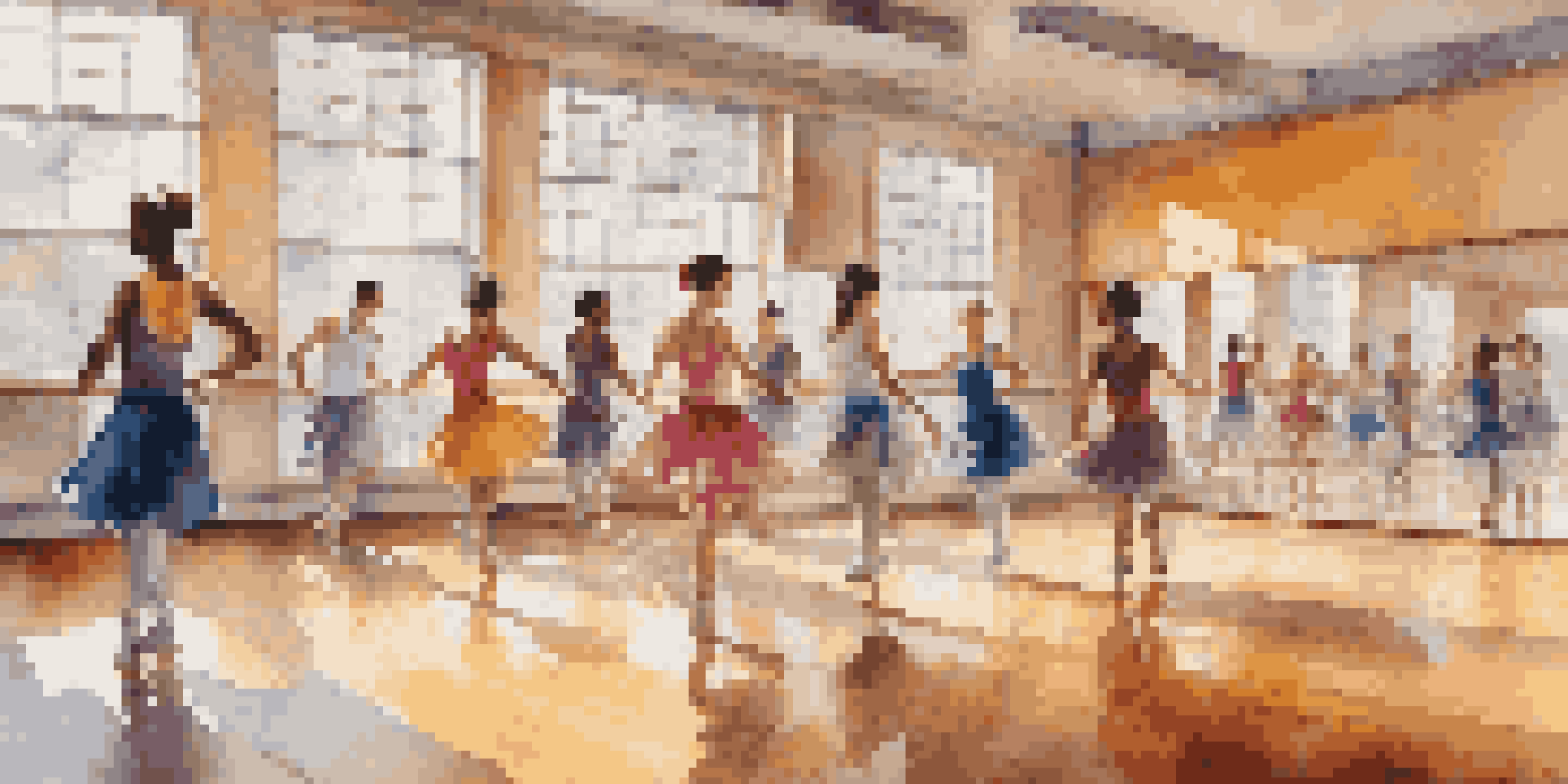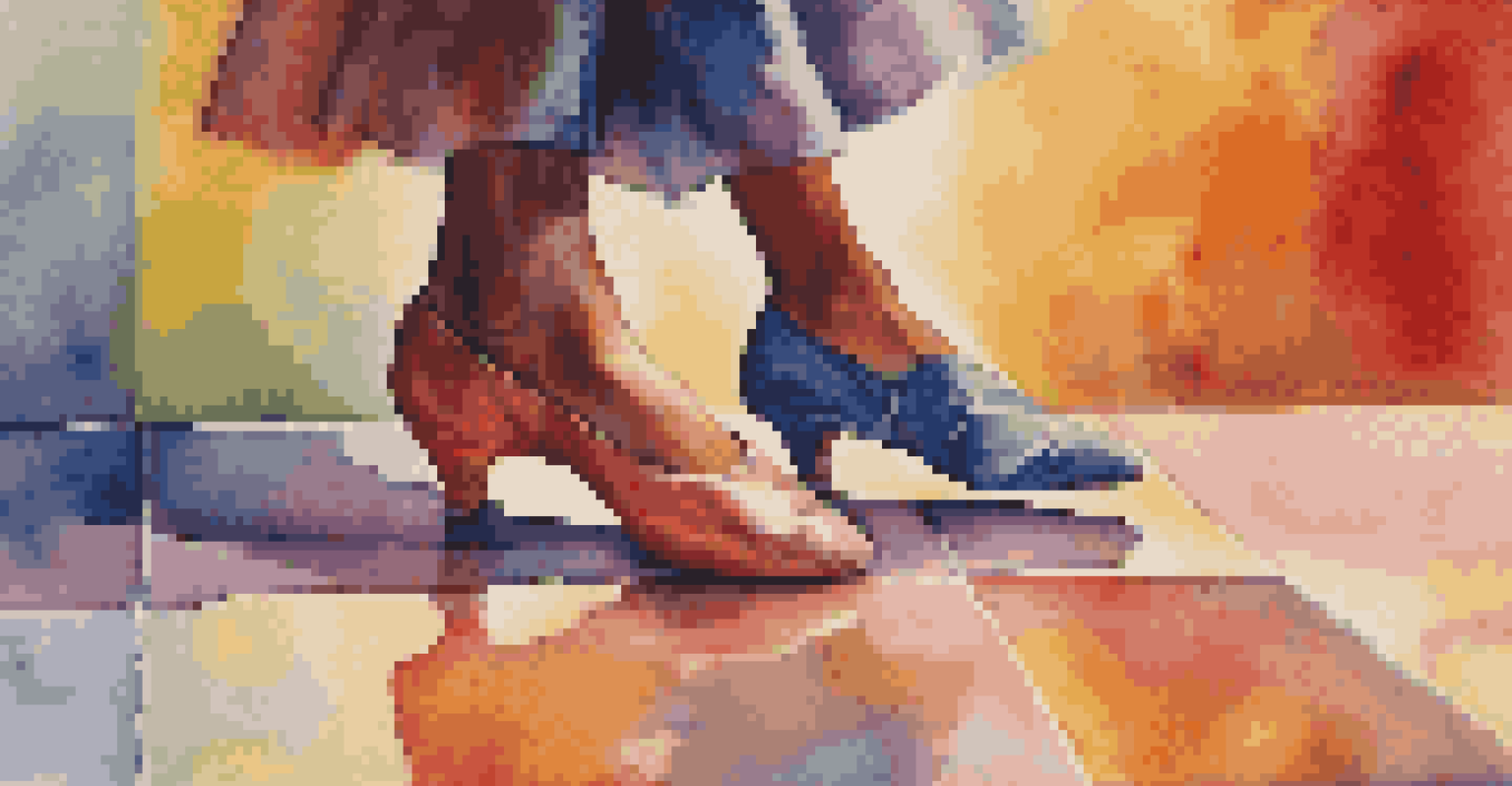Dance, Memory, and the Brain: Cognitive Benefits Explained

Understanding the Connection Between Dance and Memory
Dance is not just a form of art; it's an intricate combination of movement and memory. When we dance, we rely on our ability to remember sequences and patterns, engaging different areas of our brain. This connection between dance and memory is fascinating and highlights how physical activity can stimulate cognitive functions.
Dancing is like dreaming with your feet!
As we learn new dance routines, we enhance our memory skills, which can translate to other aspects of life. For instance, remembering a series of steps can improve our overall memory retention and recall. This intertwining of dance and memory showcases how rhythm and movement can create lasting mental pathways.
Moreover, the social aspect of dancing allows for additional cognitive engagement. Interacting with others while dancing not only aids in memory retention but also fosters emotional connections, further enhancing the learning experience.
How Dance Activates Different Brain Regions
Dance activates multiple areas of the brain, including those responsible for planning, coordination, and memory. When we dance, our brain works hard to synchronize movements, which engages the motor cortex. This activity can bolster cognitive abilities by creating new neural connections.

The hippocampus, a region vital for memory formation, also plays a key role during dance. Engaging in dance can stimulate this area, enhancing not just our dance skills but also our overall memory capacity. This is particularly beneficial for older adults, as it can help counteract age-related memory decline.
Dance Enhances Memory Skills
Engaging in dance routines improves memory retention and recall by stimulating different areas of the brain.
Incorporating dance into our routines can thus provide a holistic workout for the brain, sharpening our cognitive faculties while having fun. This unique blend of movement and memory makes dance an excellent tool for mental agility.
The Role of Rhythm in Memory Enhancement
Rhythm is a fundamental aspect of dance that significantly contributes to memory enhancement. The repetitive nature of dance routines reinforces memory through rhythm, making it easier for our brains to encode and retrieve information. This is akin to how we learn songs; the rhythm helps us remember the lyrics.
Dance is the hidden language of the soul.
Research has shown that engaging with rhythmic activities can improve cognitive skills, particularly in children. For example, children who participate in dance classes often show improved attention spans and better memory recall. This connection between rhythm and memory is an exciting area of study in cognitive science.
Furthermore, the use of rhythm in dance can also help in recognizing patterns, which is a critical skill in problem-solving and analytical thinking. Thus, engaging in rhythmic dance can be a fun way to boost our cognitive abilities.
Dance as a Social Activity for Cognitive Growth
Dance is inherently social, which further amplifies its cognitive benefits. When we dance with others, we engage in social interactions that stimulate our brain's social cognition areas. These interactions can enhance our ability to understand and remember social cues, which is crucial in everyday life.
Group dancing, such as line dancing or salsa, encourages teamwork and communication, strengthening our social networks. This social bonding through dance can lead to improved mental health, reducing feelings of loneliness and anxiety, which can otherwise impair cognitive function.
Social Dance Boosts Cognitive Growth
Dancing with others fosters social interactions that enhance understanding of cues and strengthen emotional connections.
Moreover, the shared experience of learning a dance routine together fosters a sense of community, enhancing emotional connections and memory retention. Thus, dancing socially not only benefits our bodies but also nurtures our minds.
Dance and Neuroplasticity: Building New Connections
One of the most exciting aspects of dance is its ability to promote neuroplasticity—the brain's capacity to adapt and form new connections. When we learn new dance steps, our brains are literally rewiring themselves, enhancing our cognitive flexibility. This adaptability is crucial for maintaining cognitive health as we age.
Neuroplasticity through dance can also aid in rehabilitation for individuals recovering from brain injuries or strokes. Dance therapy has been shown to improve motor and cognitive functions, making it a valuable tool in recovery programs.
By embracing dance, we are not just having fun; we are actively participating in an activity that can lead to long-term cognitive benefits. This means that making dance a regular part of our lives can result in a healthier, more agile brain.
Emotional Benefits of Dance and Memory Retention
Engaging in dance is not only beneficial for memory; it also has profound emotional benefits that can enhance cognitive function. When we dance, our brains release endorphins, which help reduce stress and anxiety. Lower stress levels can lead to better focus and improved memory retention.
Moreover, dance allows for emotional expression, which can aid in processing feelings and memories. This cathartic aspect of dance can help us remember experiences more vividly, as emotions are tightly linked to memory recall.
Dance Promotes Brain Neuroplasticity
Learning new dance steps rewires the brain, enhancing cognitive flexibility and aiding recovery from brain injuries.
Thus, the emotional benefits of dance contribute to a positive feedback loop—dancing improves our mood, and a better mood enhances our cognitive abilities. It's a win-win situation for both our mental health and memory.
Practical Tips for Incorporating Dance into Your Life
Incorporating dance into your daily routine doesn't have to be complicated. Start by setting aside just 10 to 15 minutes a day to move to your favorite music. Whether it's a solo dance party in your living room or joining a local dance class, the key is to enjoy the process.
Consider exploring different styles of dance to keep things exciting. From hip-hop to ballroom, each style offers unique benefits and challenges, keeping your brain engaged as you learn new steps. Plus, experimenting with different genres can help you find what resonates with you the most.

Lastly, don't forget to dance with others! Whether it's a group class or a dance party with friends, the social connection enhances the cognitive benefits of dance. So, put on those dancing shoes and let the rhythm guide you toward a healthier mind!